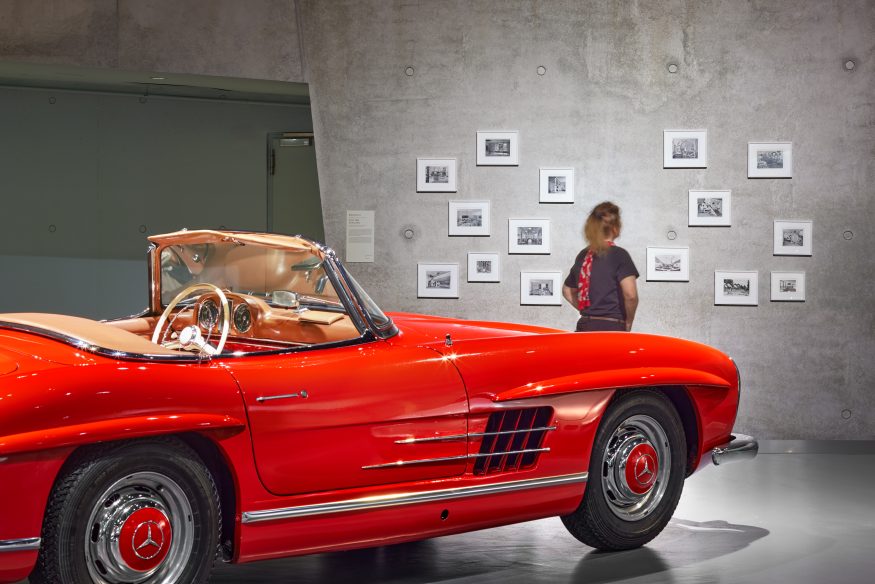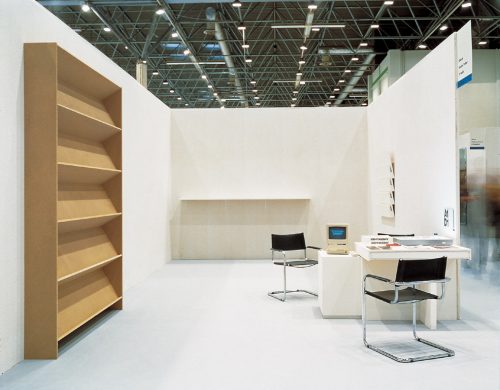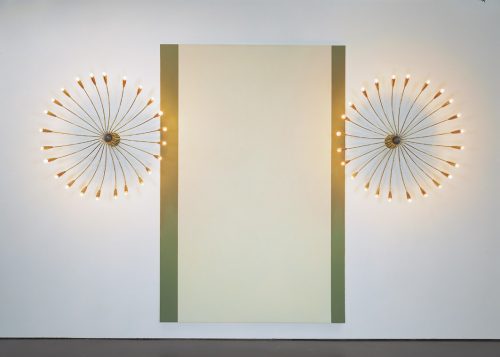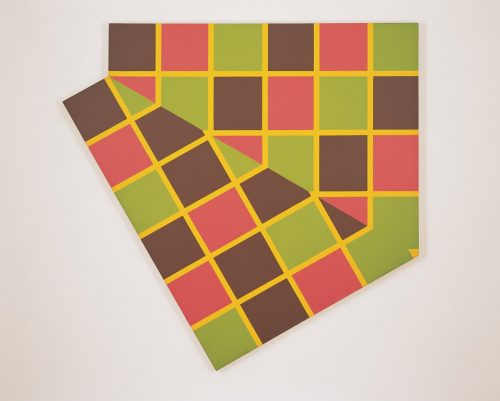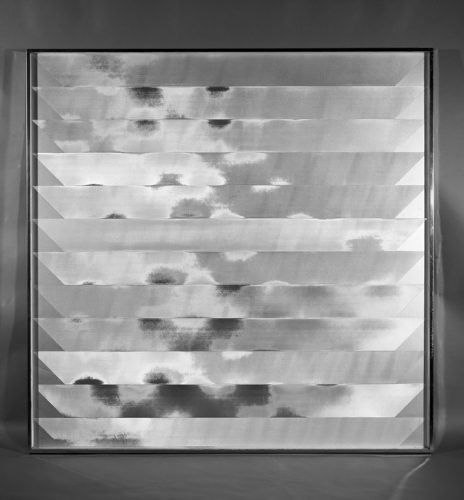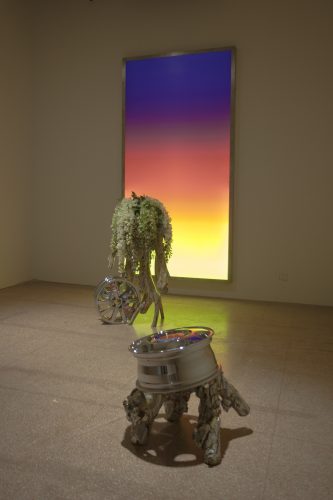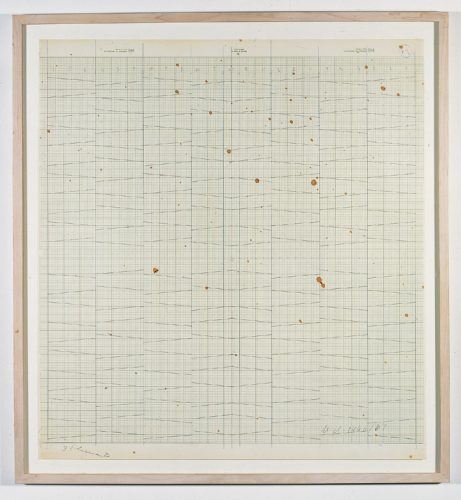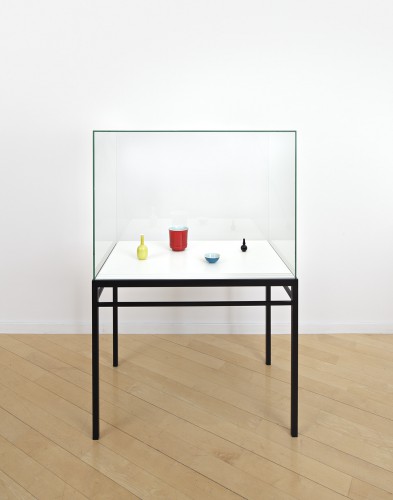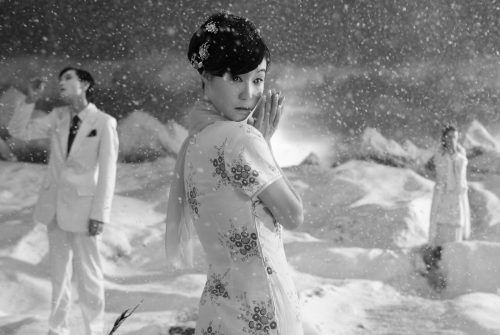Profile
The Mercedes-Benz Art Collection was founded in 1977 and is now one of the most important European corporate collections of museum quality and international renown. The collection includes around 3,000 works by over 800 artists – including world-famous artists such as Cao Fei, Sylvie Fleury, Charlotte Posenenske, Oskar Schlemmer, Franz Erhard Walther and Andy Warhol.
The collection focuses on abstract-constructive pictorial concepts, critically-engaged art, and representative works and commissions on themes such as automobility, design, and construction. Its diverse spectrum of media ranges from painting, drawing, sculpture, object and light art to installation, photography and video. The collection profile focuses on the abstract avant-gardes of the 20th century and international contemporary art. Examples of abstract artworks from the 20th century range from the Bauhaus and classical modernism, concrete art, constructivism and art informel after 1945 to the European ZERO movement, minimalism and conceptual art, Neo Geo, postminimalism, and conceptual tendencies.(For more see: Focal Points)
Social commitment: communicating art and promoting encounters with new ideas
The Mercedes-Benz Art Collection embodies Mercedes-Benz’s broad social commitment to culture and education. With the art collection, the company aims to create a recognisable benefit for the common good. The basis for this is Mercedes-Benz’s self-perception of responding responsibly to social issues and developments. As part of a global business enterprise whose employees are active in the most diverse cultural spheres, the Mercedes-Benz Art Collection sees the communication of art within and outside the company as a central task. With over 40 years of history, the collection is an integral part of the corporate culture.
The Mercedes-Benz Art Collection aims to give its audience access to artistic worlds and promote encounters with new ideas and topics. Art is an expression of our human thinking, life, and actions: it is a mirror of society that helps us to reflect on our own behaviour and thus also to rethink our points of view. Art offers people intellectual and sensory space for open dialogue and encounters with new things.
Enabling dialogue: Exhibitions inside and outside the company
The Mercedes-Benz Art Collection makes the collection accessible to a broad public interested in art through exhibitions of the artworks in the company and in museums. The aim is to connect people.
A large part of the collection is on display at various Mercedes-Benz locations – some permanently, some temporarily. This enables employees to encounter the cultural, social, political and aesthetic concepts of modern and contemporary art in their day-to-day work. In this way, the Mercedes-Benz Art Collection goes far beyond the idea of merely decorating the enterprise.
Furthermore, the Mercedes-Benz Art Collection is permanently exhibiting some of its works in the Mercedes-Benz Museum in Stuttgart. Under the title “Now on View. Works from the Mercedes-Benz Art Collection in the Mercedes-Benz Museum”, the art collection presents classics and more recent acquisitions in changing exhibitions. In addition, the collection presents its works in various exhibitions and as loans in renowned German and international museums (e.g. New York, Los Angeles, Johannesburg, Tokyo, Singapore, London, Bilbao and Sao Paulo). The collection’s activities are experienced as an attractive platform to promote dialogue and social encounters.
News
-
From the archives: Emilio Chapela
In the “Mercedes me” magazine the director of the Mercedes-Benz Art Collection, Anne Vieth, presents some highlights from the extensive art archive. In this issue: a series of paintings by Mexican artist Emilio Chapela.
-
Interview with Michael Sailstorfer about his work “C111”
Created to inspire sustainable fashion design, Mercedes-Benz awards the third Sustainability Prize to Petra Fagerstrom at the 38th Festival d’Hyères. In the accompanying campaign, the looks of the finalists are presented around the artwork “C111” by Michael Sailstorfer from the Mercedes-Benz Art Collection. We interviewed him about his childhood dream car.
